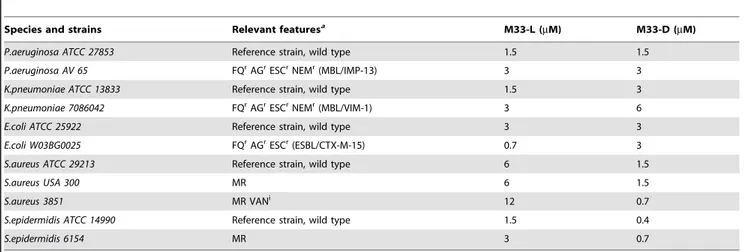Isomerization of an antimicrobial peptide broadens antimicrobial spectrum to gram-positive bacterial pathogens.
Texto
Imagem


Documentos relacionados
O tempo de CPU consumido por uma simulação é determinado pelo número de variáveis e restrições do problema LP que, por sua vez, dependem do número de nós da rede, número de
Effect of GB, proline and trehalose on the bacterial growth at different concentrations of NaCl.. At 0.1 M NaCl, the supplementation of trehalose in
Table 2 – Activity of selected antimicrobial agents when tested against 1825 Gram-positive pathogens from Latin America nations (2011)..
Our results showed that Copaifera langsdorffii oleoresin has antimicrobial activity against Gram-positive bacteria (S. faecalis) ATCC strains, and it didn’t have any activity
The antimicrobial activity of a methanolic extract of amurca (olive oil lees) was determined against both Gram-positive ( L. monocytogenes and S. aureus ) and Gram-negative
The implication is that resident communities of foreign language speakers in Porto have comparable contact with the local population, but again, we should take into account the
Antimicrobial activity of four selected actinomycete isolates was determined against bacterial and fungal pathogens of nosocomial origin by agar well diffusion method..
Most of the synthesized compounds showed potent inhibition of several Gram-positive and Gram- negative bacterial strains with minimum inhibitory concentration (MIC) values in the